Alienware M11x R3: Portable Powerhouse
by Dustin Sklavos on July 22, 2011 1:15 AM ESTThe Fastest Ultraportable on the Block
Alienware's M11x R3 gets a big, big improvement with Sandy Bridge. Never mind the i7-2617M our review unit is equipped with, the minimum spec Intel Core i5-2537M has a higher nominal clock and faster turbo clock than the overclocked i7-640UM in the previous generation; it also has a slightly lower TDP and substantially improved performance clock-for-clock. Likewise, the NVIDIA GeForce GT 540M paired with it should bring equally notable improvements in performance--gaming and otherwise.


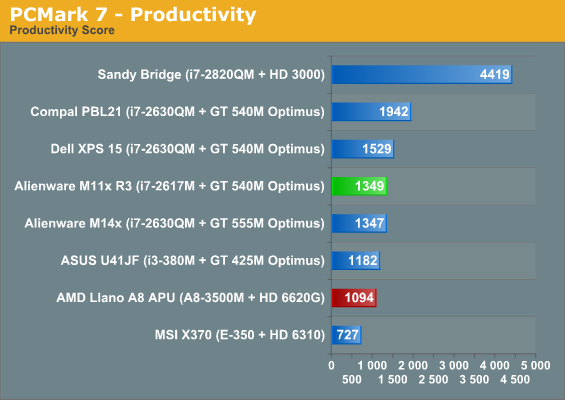
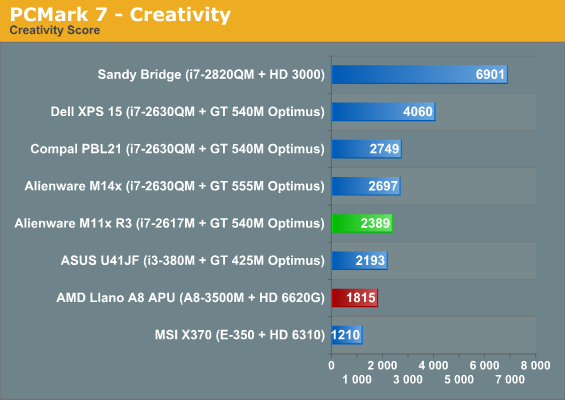
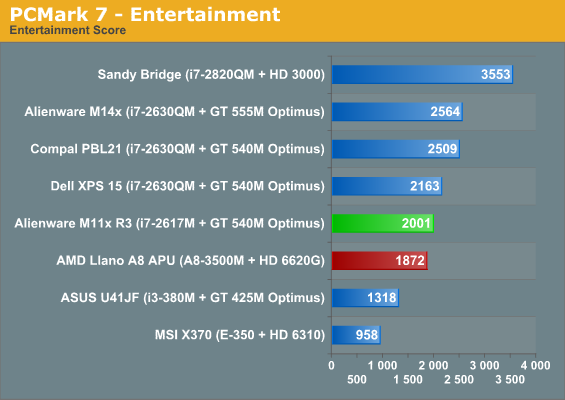
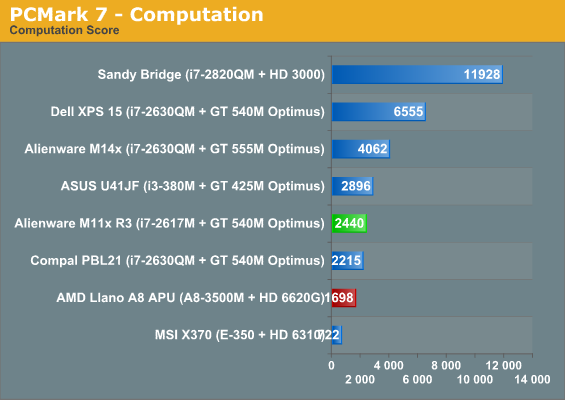
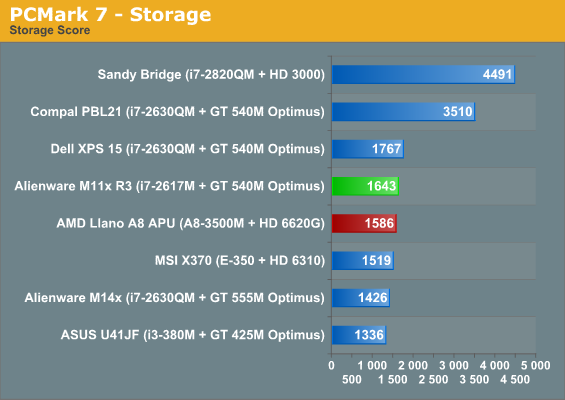
The M11x R3 may be packing a low voltage processor, but it certainly isn't slow. High turbo clocks and a fast GPU allow it to hang well with the rest of the pack and consistently beat out the old i3-380M, itself a faster CPU than the i7-640UM in the M11x R2. It's a shame we don't have PCMark 7 results from the earlier R2, but we do have results for other benchmarks, which we'll see below.

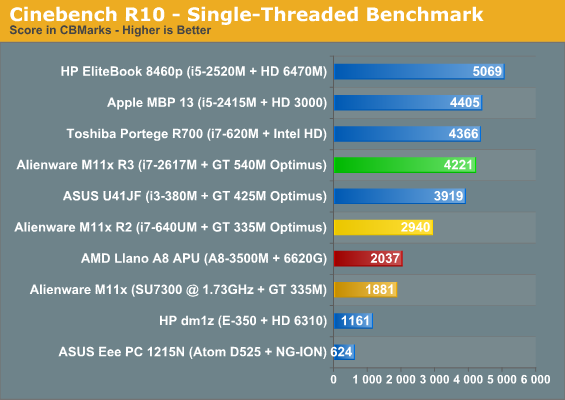
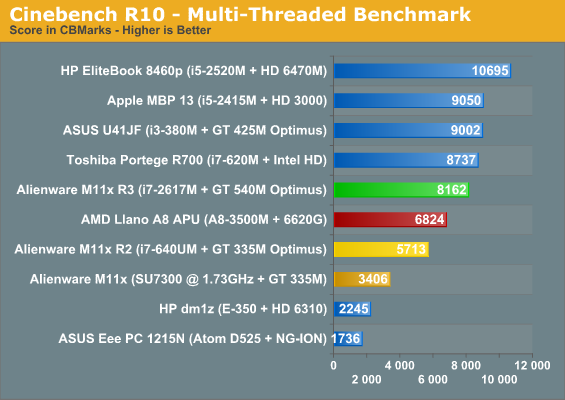
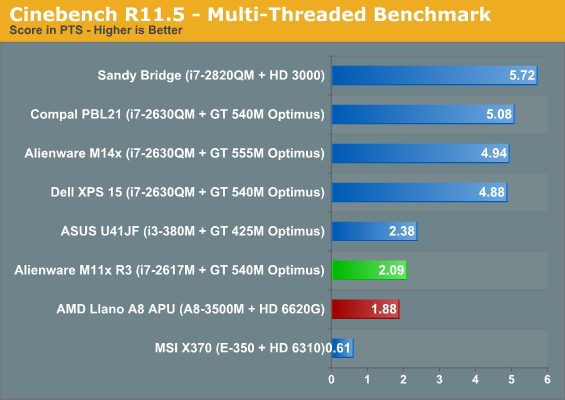
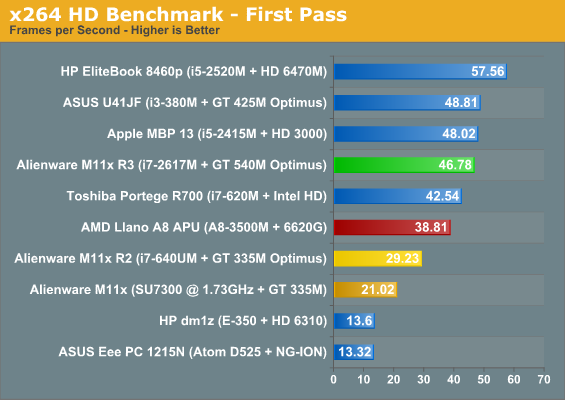
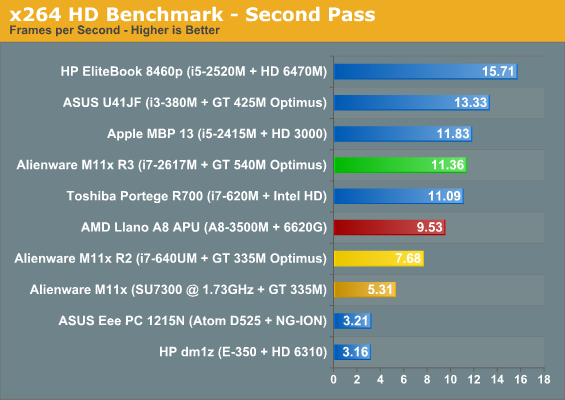
In every metric where the M11x R3 can be compared to its predecessors, it wallops them soundly. In fact it's consistently more than twice as fast as the overclocked Core 2 Duo SU7300 in the first generation unit, launched just 16 months ago! The U41JF posts unusually high scores, but it's worth pointing out that its i3-380M's nominal 2.53GHz clock speed has been ramped up by ASUS out of the factory to a robust 2.91GHz.
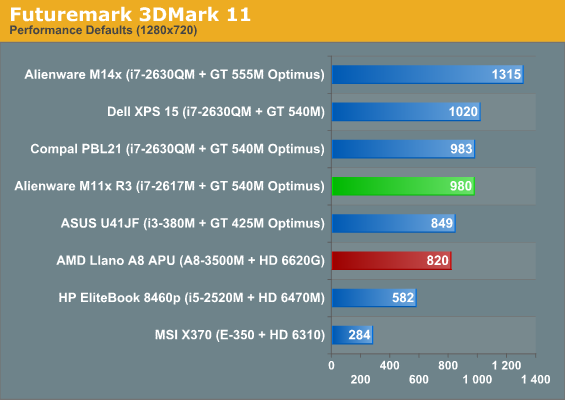
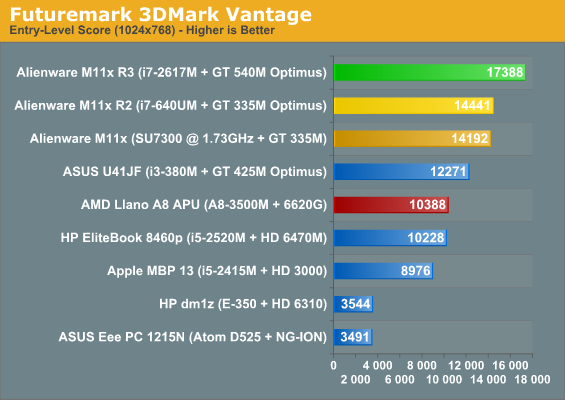
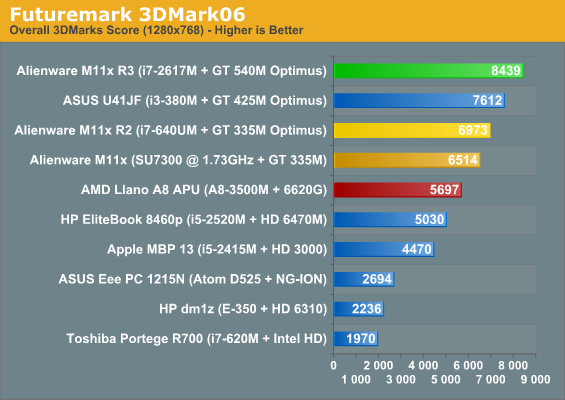
The Alienware M11x R3 proves absolutely monstrous in its weight class in 3DMark, and again demonstrates a substantial improvement in performance over the preceding models. With Sandy Bridge it definitely seems the M11x has finally gotten away from being heavily CPU-limited. The Dell XPS 15 sporting the same GPU but with a quad-core CPU only checks in a scant 4% faster in 3DMark 11, but let's see how that translates over to actual games.










55 Comments
View All Comments
Luke2.0 - Saturday, August 6, 2011 - link
I see, thank you for bringing up the cost issue as well.Now if anyone's still here... which one of these is the most expensive (or the least)?
1) 1600MHz, with 128-bit and 2 channels yielding 51.2 GB/s (AMD Llano)
2) 2000MHz, with 64-bit and 2 channels yielding 32 GB/s (Intel Sandy Bridge, Ivy Bridge, with premium memory modules)
3) 1866MHz, with 128-bit and 2 channels yielding 59.7 GB/s (AMD Trinity, estimate)
Thank you
Death666Angel - Saturday, July 23, 2011 - link
Hey!Thanks for the review, just one thing: It would be nice to get the dimensions and weight figures in international units as well (cm/mm and kg). Anandtech has it in some articles and it's missing in others. :-)
frozentundra123456 - Saturday, July 23, 2011 - link
Impressive performance in such a small package, but I am not sure I would want to game on an 11 inch screen, no matter what the resolution. And the price just seems too high.I would prefer to get a 1000.00 gaming desktop and a 500.00 netbook, tablet, or small laptop.
I wonder what kind of performance a Llano chip could provide in a small form factor like this, if it would fit into the heat, power, and size envelope. Maybe you could get some sort of decent light gaming and save a lot of money.
rousseauhk - Tuesday, July 26, 2011 - link
Have seen a few reviews of this laptop, but for some reason none mention the battery performance under a gaming load. For a laptop thats a dedicated portable gaming machine, I'm astonished that none of the reviewers seem to think its important.Does anyone have any figures for this?
cheers
/rhk
Bolas - Monday, October 31, 2011 - link
Just bought a couple Alienware laptops, an m17x R3 and an m11x R3.I'm enjoying the m11x more than I thought I would. The portability is great!
I can put my m11x in the same backpack as the m17x so that I can game when I game. In other words, a guest comp for the "victim".